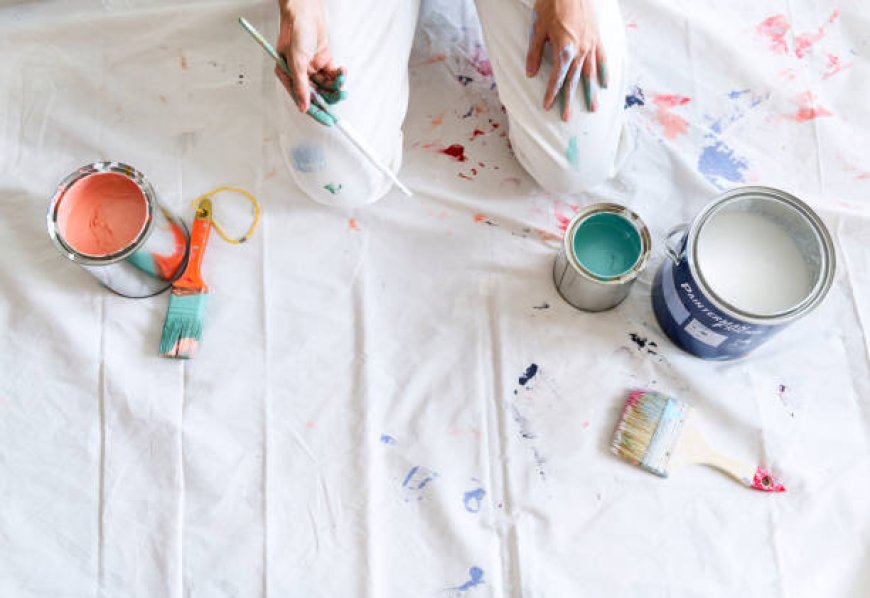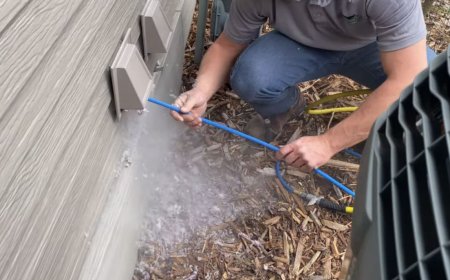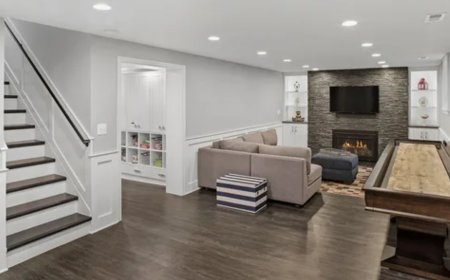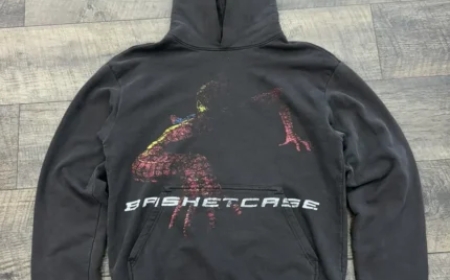Top 5 Paint Drop Cloths for DIY and Professional Use
Discover the top 5 paint drop cloths for DIY and professional projects. Learn which type is best for your needs and how to protect floors and surfaces effectively.

When painting or remodeling any space, protecting your floors, furniture, and fixtures is just as important as choosing the right brush or paint color. Whether you're a weekend DIYer or a seasoned painting contractor, paint drop cloths are a critical component in keeping your workspace clean, safe, and efficient. These heavy-duty covers serve as the first line of defense against paint spills, dust, and debris making them an essential tool for every painter.
This guide explores the top 5 types of paint drop cloths ideal for both home projects and professional jobs, focusing on quality, use case, and effectiveness.
1. Canvas Drop Cloths for Superior Durability and Reusability
Canvas drop cloths are a favorite among professionals for their strength, longevity, and versatility. Made from tightly woven cotton, canvas is absorbent and highly durable. These cloths are excellent for protecting floors and furniture in high-traffic areas.
Benefits of canvas drop cloths:
-
Absorbs paint instead of letting it pool and spread
-
Heavy enough to stay in place without tape
-
Reusable and machine washable
-
Ideal for hardwood floors, tile, and outdoor surfaces
Canvas is a premium choice when you need a solution that will last across multiple painting or remodeling projects.
2. Plastic Drop Cloths for Quick, Disposable Coverage
Plastic drop cloths are great for quick, lightweight projects or single-use situations. Theyre especially useful when you want to cover furniture, windows, or countertops temporarily.
Advantages of plastic drop cloths:
-
Waterproof and stain-resistant
-
Budget-friendly for short-term use
-
Lightweight and easy to store
-
Available in various thicknesses (from 0.5 mil to 4 mil or more)
While not as durable as canvas, plastic cloths are a solid option for tasks like ceiling painting or protection during light-duty indoor work.
3. Paper-Backed Drop Cloths for Dual Protection
Paper-backed drop cloths combine two materials: absorbent paper on top and leak-proof plastic on the bottom. This type of drop cloth is ideal when you need moisture control and surface grip.
Use cases and features include:
-
Great for hardwood and laminate floors where paint seepage must be prevented
-
Reduces slipping due to the grippy bottom layer
-
Disposable, yet more protective than standard plastic
-
Easy to roll out and cut to custom lengths
This is a smart option when working on sensitive flooring that needs additional protection.
4. Butyl-Coated Drop Cloths for Heavy-Duty Commercial Use
For professionals tackling large-scale or high-risk paint jobs, butyl-coated drop cloths offer exceptional leak resistance and floor protection. These cloths feature a rubberized backing that prevents any kind of paint penetration.
Why choose butyl-coated drop cloths:
-
100% waterproof and solvent-resistant
-
Non-slip backing for added safety
-
Ideal for use on stairs or sloped surfaces
-
High durability makes them perfect for contractors
While they come at a higher price point, their performance and protection are unmatched for commercial environments.
5. Trim and Runner Drop Cloths for Precision Work
Sometimes you need drop cloths tailored for smaller or narrow spaces. Trim or runner cloths are long and narrow, specifically designed for hallways, room edges, or along baseboards. These are perfect for interior painting where detailed work is involved.
Highlights of trim/runner drop cloths:
-
Perfectly sized for trim work or doorways
-
Easier to handle than large tarps
-
Provides a neater workspace with less excess material
-
Can be layered or paired with larger cloths for full coverage
They are ideal for both pros and DIY users who want precision and minimal cleanup.
Features to Look for When Choosing Paint Drop Cloths
Selecting the right drop cloth depends on the type of project and the surfaces you're protecting. Here are key features to consider:
1. Absorbency
Canvas offers great absorbency, reducing the risk of slipping on wet paint. Plastic or vinyl, by contrast, is non-absorbent and causes paint to pool.
2. Thickness (Mil or Weight)
Thicker drop cloths provide better protection against tears and spills. Plastic drop cloths range from 0.5 mil to 4 mil thick, while canvas is measured by ounces per square yard.
3. Size and Shape
Choose dimensions that fit your workspace. A large 9x12 ft canvas tarp is ideal for rooms, while smaller 4x5 ft cloths are best for furniture.
4. Reusability
Reusable cloths like canvas or butyl-backed drop cloths are more cost-effective for long-term or frequent use.
5. Grip and Slip Resistance
Non-slip backing or a heavier weight ensures your cloth stays in place during use, reducing safety hazards.
Best Use Cases for Each Drop Cloth Type
| Drop Cloth Type | Best Use Case |
|---|---|
| Canvas | Long-term painting projects, contractors |
| Plastic | Quick indoor jobs, furniture covers |
| Paper-Backed | Laminate or hardwood floor protection |
| Butyl-Coated | Commercial spaces, stairwells, bathrooms |
| Trim/Runner Cloths | Baseboard painting, narrow corridors |
Using the right cloth in the right situation not only speeds up the project but also ensures optimal protection.
Tips for Maximizing Drop Cloth Effectiveness
To get the most out of your paint drop cloths, consider the following expert tips:
-
Secure edges with painters tape to prevent movement
-
Overlap cloths if using multiple pieces to avoid gaps
-
Wash canvas cloths between uses to extend their lifespan
-
Store folded in a dry place to prevent mildew
-
Use corner weights or heavy objects to anchor tarps on windy outdoor jobs
These small practices make a big difference in both safety and effectiveness.
Common Mistakes to Avoid When Using Drop Cloths
Even experienced painters sometimes overlook key issues. Here are mistakes to steer clear of:
-
Using thin plastic on slick flooring (slip hazard)
-
Not taping down edges in high-traffic areas
-
Choosing the wrong size for the job
-
Overlapping non-absorbent cloths where paint can pool
-
Reusing disposable cloths that have weakened
By avoiding these errors, you ensure cleaner results and a safer work area.
Why Quality Matters for DIY and Pro Projects Alike
Whether you're freshening up your living room or completing a large renovation, investing in high-quality drop cloths saves time, money, and stress. DIY users benefit from easier cleanup and less damage, while professionals maintain a reputation for neat, damage-free work.
Choosing the right material based on your job type can elevate your results and keep every project tidy from start to finish.
































